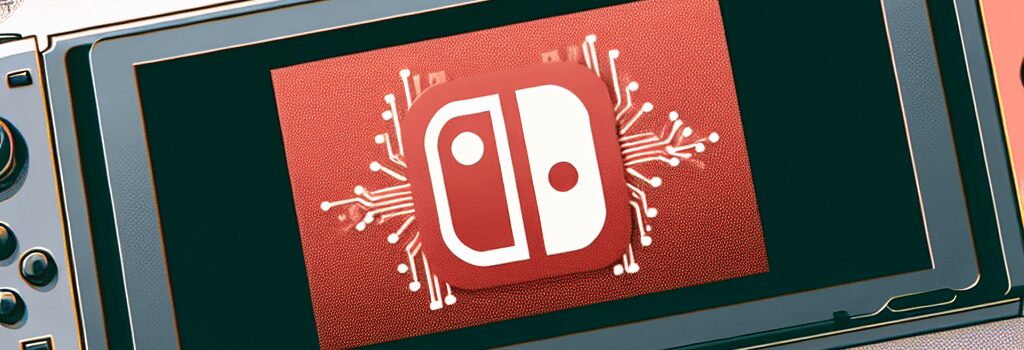Enhanced Performance and Compatibility Challenges: What to Expect with the Switch 2

As anticipation for Nintendo’s Switch 2 grows, recent announcements have shed light on the console’s backward compatibility. While many original Switch titles will see free performance updates or enhancements on the new hardware, some games will face technical challenges or won’t run at all. This article explores the enhanced functionality, technical specifications, and the testing process behind these compatibility updates.
Backward Compatibility and the Promise of Free Updates
Nintendo has confirmed that the Switch 2 will support an extensive portion of the current Switch library. Among the most exciting developments is the introduction of free update tiers for several first-party titles. These updates may not unlock the full arsenal of features seen in Switch 2 Edition games, such as higher resolutions or advanced visual enhancements, but they will boost performance and add features like GameShare in select games.
- Titles Receiving Updates: Games including Arms, Captain Toad: Treasure Tracker, Super Mario Odyssey, Super Mario 3D World + Bowser’s Fury, and Clubhouse Games: 51 Worldwide Classics are among a dozen first-party titles slated for these improvements.
- Enhanced Features: While these updates may not enable full resolution scaling, they are designed to improve overall playability and potentially integrate new functionalities that leverage the upgraded hardware.
Current Compatibility Testing: Status and Challenges
Nintendo’s compatibility testing is in full swing, and early results indicate a largely positive outlook for first-party titles on the Switch 2. All Nintendo-developed games have passed basic compatibility tests, ensuring they run reliably on the new console. However, some notable issues persist:
- VR Compatibility: The Nintendo Labo Toy-Con 04 VR Kit has been marked as incompatible due to its reliance on a cardboard VR headset designed for the original Switch’s dimensions.
- Peripheral Dependencies: Games that depend heavily on the motion controls and specific features of the original Joy-Cons, such as Ring Fit Adventure, 1-2-Switch, and WarioWare: Move It!, will require the use of legacy Joy-Cons with the new hardware.
- Third-Party Challenges: Roughly 20% of over 15,000 third-party Switch titles have cleared basic testing. The remaining titles are under review, with some games launching without crashing but facing issues in certain segments of gameplay. Nintendo has published detailed PDF lists outlining which games experience startup failures or various compatibility issues.
Nintendo intends to deploy a further compatibility update later in April, aiming to resolve issues in cooperation with both internal teams and publishing partners. Some problems may be addressed through system firmware updates, while others might require developers to issue patches.
Technical Analysis: Hardware Upgrades and Software Implications
The Switch 2 represents a significant hardware overhaul compared to its predecessor. Among the anticipated upgrades are:
- Improved Resolution & Performance: Enhanced graphics capabilities and a more powerful processing unit suggest that, in many cases, games will run smoother and display at higher resolutions than on the original Switch.
- Display and Physical Dimensions: The re-engineering of the console’s form factor has implications for peripheral compatibility. For example, the physical dimensions of the Switch 2 render certain accessories, like the cardboard VR headset, incompatible without modification.
- Processor and Memory: Leaks and early teardowns indicate that the Switch 2 may feature a more robust CPU and increased RAM to handle both native and backward-compatible games more efficiently. These technical improvements could mitigate some performance issues noted in older titles.
Expert opinions in the hardware community point out that while improved specs might naturally boost performance in many older games, the extent of these gains will depend significantly on the underlying game architecture. Software optimizations and driver support play a critical role in extracting the full potential of the new hardware.
Developer Insights and Future Roadmap
As third-party developers work with Nintendo to address compatibility challenges, there is cautious optimism within the industry. Developer forums and technical briefings reveal that:
- Collaboration is Key: Nintendo’s proactive approach in releasing detailed compatibility lists and issuing upcoming system updates signals a commitment to maintaining a unified gaming ecosystem across both generations of hardware.
- Potential for Software Patches: Several issues currently affecting gameplay may be alleviated through targeted patches. Collaborative efforts between developers and Nintendo’s engineering teams continue to be critical as the company looks to smooth over any rough edges in the backward compatibility experience.
- Impact on Third-Party Gaming: While a small percentage of third-party titles have already passed initial testing, full compatibility—especially for more complex or indie titles—will be confirmed over several firmware updates. This iterative process underlines the challenges inherent in supporting a massive library across two distinct hardware platforms.
Looking Forward: The Dual-Generation Gaming Experience
The move towards backward compatibility with added performance enhancements is a strategic initiative aimed at preserving the legacy of the Nintendo Switch library while pushing new technological boundaries. Consumers can expect not only an evolutionary jump in hardware performance but also a transitional period where software and hardware are finely tuned to work seamlessly together.
For gamers, this means enjoying a blend of nostalgia with modern enhancements, though some titles may require rethinking accessory setups or waiting for further updates. For developers, it presents both a challenge and an opportunity to re-optimize classic titles and introduce innovative features that leverage the capabilities of the new console.
Conclusion
While the Switch 2 promises a significant upgrade in performance and resolution for many beloved titles, certain compatibility challenges remain. Nintendo’s thorough testing and planned updates demonstrate its commitment to delivering a seamless user experience that spans its extensive game library. As more technical details emerge and firmware updates roll out, both users and developers alike will be better equipped to navigate this dual-generation landscape.